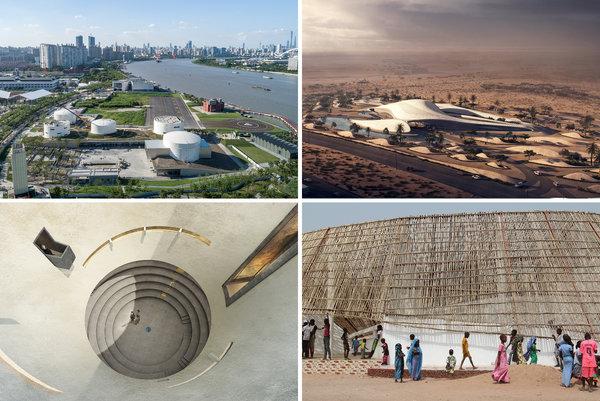Click here to view The New York Times
Architecture was long called a “gentleman’s profession,” which may have been true if by that you meant one that systematically excluded women for most of its existence. Before World War II, you could count the number of noted female architects on one hand. As late as the 1990s, the percentage of architecture firms owned by women in the United States was still in the single digits.
Today, less than a third of the American Institute of Architects (AIA) membership is female, and a survey of the world’s 100 largest architecture firms by the online design magazine Dezeen found that women occupied just 10 percent of the highest-ranking jobs. The first time a woman won the AIA’s Gold Medal, its highest honor, was in 2014. The recipient, Julia Morgan, had been dead for 57 years.
There are signs of improvement, though. According to the National Council of Architectural Registration Boards and the Association of Collegiate Schools of Architecture (ACSA), the number of women in the field continues to rise: Women now account for nearly half of the students in architecture schools in the United States; they make up about 40% of those taking licensing exams — up by nearly 50 percent in 20 years.
As the 14 projects streaming across these pages indicate, offices led or owned by women are creating an ever-wider range of public buildings that address architecture and urbanism in new and invigorating ways.
The Shed, an arts center in the Chelsea neighborhood of Manhattan, by Diller Scofidio + Renfro in collaboration with Rockwell Group. Right, Elizabeth Diller.
In 1999, when Elizabeth Diller and her husband and partner, Ricardo Scofidio, won the first MacArthur Foundation “genius” grant ever given to an architect, they were known more for their brainy publications and art installations than for their buildings — of which there were none. Today, Ms. Diller’s office is a high-culture juggernaut, responsible for some of the most renowned projects of the last decade, including the High Line in New York City, the Institute of Contemporary Art in Boston and the Broad Museum in Los Angeles.
With the Shed, a new multidisciplinary arts center at Hudson Yards in Manhattan, Diller Scofidio + Renfro and the Rockwell Group, their design collaborators, have created a first-of-its-kind, 200,000-square-foot, reconfigurable event space for the Far West Side. The building’s signature element is a striking 120-foot high, pleated glass enclosure on massive wheels that can extend or retract to accommodate varied programs — concerts, exhibitions, theater — and crowd sizes. Major construction is expected to end this winter.
Though also an arts center, Deborah Berke’s NXTHVN, in New Haven, is world’s away from the Shed. Ms. Berke, who announced herself to the architectural world with a manifesto entitled “Architecture of the Everyday” and is now the first female dean of Yale’s School of Architecture, has always eschewed the flamboyant. NXTHVN, which opens in December, occupies two former factories that were quietly renovated into studios and a community center founded by the artists Titus Kaphar and Jonathan Brand. A new tower clad in glass and scalloped concrete panels links the two buildings and creates a beacon of renewal for its frayed neighborhood.
Renewal and civic identity are also the goals of an arts project in Mestre, the Italian port town long overshadowed by Venice, its more glamorous neighbor across the lagoon. In December, an angular, colorful, 250,000-square-foot museum and cultural complex called M9, designed by the Berlin firm Sauerbruch Hutton, will open at the city’s center. “The big victory here,” says Louisa Hutton, the firm’s founding partner, “was reinstating walking paths across a site that had been closed to the public for decades. This knits the project into the city and gives residents a place to gather — and call their own.”
The Parisian architect Manuelle Gautrand also aims to create an urban gathering place with her new Belaroia Hotels, a mixed-use project in the southern French city of Montpellier. Ms. Gautrand wraps a conference center, hotel, restaurants, shops and apartments around a five-story public terrace that looks out over the city. “The question of how we make our cities welcoming to new populations is paramount,” Ms. Gautrand said in a recent interview. “This space addresses that.”
The architect Amanda Levete and the artist Anish Kapoor, both of London, pursue a similar goal with the subway entry plazas they have created for a neighborhood in Naples, Italy, that has suffered from municipal neglect. Two massive, contrasting sculptures — one in reflective aluminum, the other in Corten steel — now mark the two entrances of the Monte San Angelo station. Below ground, Ms. Levete incorporates the vaults of an earlier, failed transit station into the rest of her design. The 80,000-square-foot project began while Ms. Levete was a partner at her previous firm, Future Systems, and is scheduled to open in early 2019.
Next month, when a school that the New York architect Toshiko Moridesigned pro bono for the remote Senegalese village of Fass opens, it will be functionally and architecturally momentous. It is the first school in a region with 30,000 school-age children, and will serve girls and boys. Ms. Mori’s oval design, plaster-covered mud-brick walls, and thatched roof are a modern take on local housing traditions — an effort to make the building welcoming to its 200 students, ranging from 6- to 10 years old.
“I’m fascinated with how we bring forward the vernacular with contemporary applications,” said Ms. Mori, who in 2015 completed the Thread cultural center in the village of Sinthian, about an hour to the north.
Magui Peredo and her partner, Salvador Macias, the principals of Estudio Macias Peredo in Guadalajara, Mexico, and finalists for this year’s Mies Crown Hall Americas Prize for Emerging Architecture, elegantly reinterpret the Mexican building tradition of thick walls and courtyards for their mixed use — apartments above commercial space — González Luna Building.
“Walls are an enduring aspect of Mexican architecture in general, and our work in particular,” Ms. Peredo explained. “Luis Barragan, who was from here, used walls to critique the thinness of glass, its impermanence. For us, the question was how to express the wall in a vertical building.” Their solution was to puncture the exposed concrete perimeter structure with recesses that give visual depth and create private terraces and shade for the apartments.
Tradition also inspired Neri & Hu’s brick-clad, 17-room hotel in Yangzhou, China, which opened officially last month. The Shanghai architects, whose practice also includes a thriving design store and their own lines of furniture and objects, looked to Chinese urban and residential typologies to create a modern-day “walled city,” a collection of quiet courtyards and enclosed spaces linked by a grid of narrow pathways.
Another of the firm’s projects, the 25,000-square-foot Aranya Art Center in Shanghai, is trying to become an urban destination in one of the hastily built, culturally arid suburban developments that characterize so many modern Chinese cities. “The situation in these developments is far from ideal,” said Rossana Hu, the firm’s co-founder. “We’re trying to create context where there is none.”
Creating context was not an issue for Huang Wenjing and Li Hu, principals of the Beijing-based Open Architecture, with their Tank Shanghai project, which opens this month. It repurposes the fuel storage tanks of a former military airport into an art museum and cultural center in the booming West Bund arts district. There’s a traditional museum in one tank — and a restaurant, nightclub, and event space in individual tanks. The 110,000-square-foot project also includes a tank with an open-air oculus, for exhibiting large-scale art.
On a smaller scale, but equally striking, is the firm’s 8,000-square-foot Dune Art Museum, opening in October and named for its unusual location: carved into — and mostly beneath — a sand dune near the Chinese coastal city of Qinhuangdao. The subterranean siting strategy actually preserves a small slice of open sand in an area where mammoth development has all but erased a once sylvan beach.
More than almost anyone, Zaha Hadid unmoored contemporary architecture from its affinities for right angles and male dominance. The first woman to win the Pritzker Prize (in 2004), she died at the height of her powers in 2016. Two of her later projects will finish major construction at the end of this year and extend her legacy. The first, 1000 Museum Tower, is a 900,000-square-foot condominium in downtown Miami with an exposed structural system that climbs the 62-story building like the tendrils of a giant, otherworldly beanstalk.
Hadid’s 70,000-square-foot headquarters for the Bee’ah Corporation, an environmental and waste consultancy in Sharjah, in the United Arab Emirates, is even more organic in design: a 70-foot-high, dunelike composition that looks as though it was swept into place by a desert wind.
When Hadid opened her office in 1979, there was some question as to which was more radical: her work, or the idea that a woman could lead a practice that would grow to a staff of more than 400. Happily, today only the work continues to amaze.

